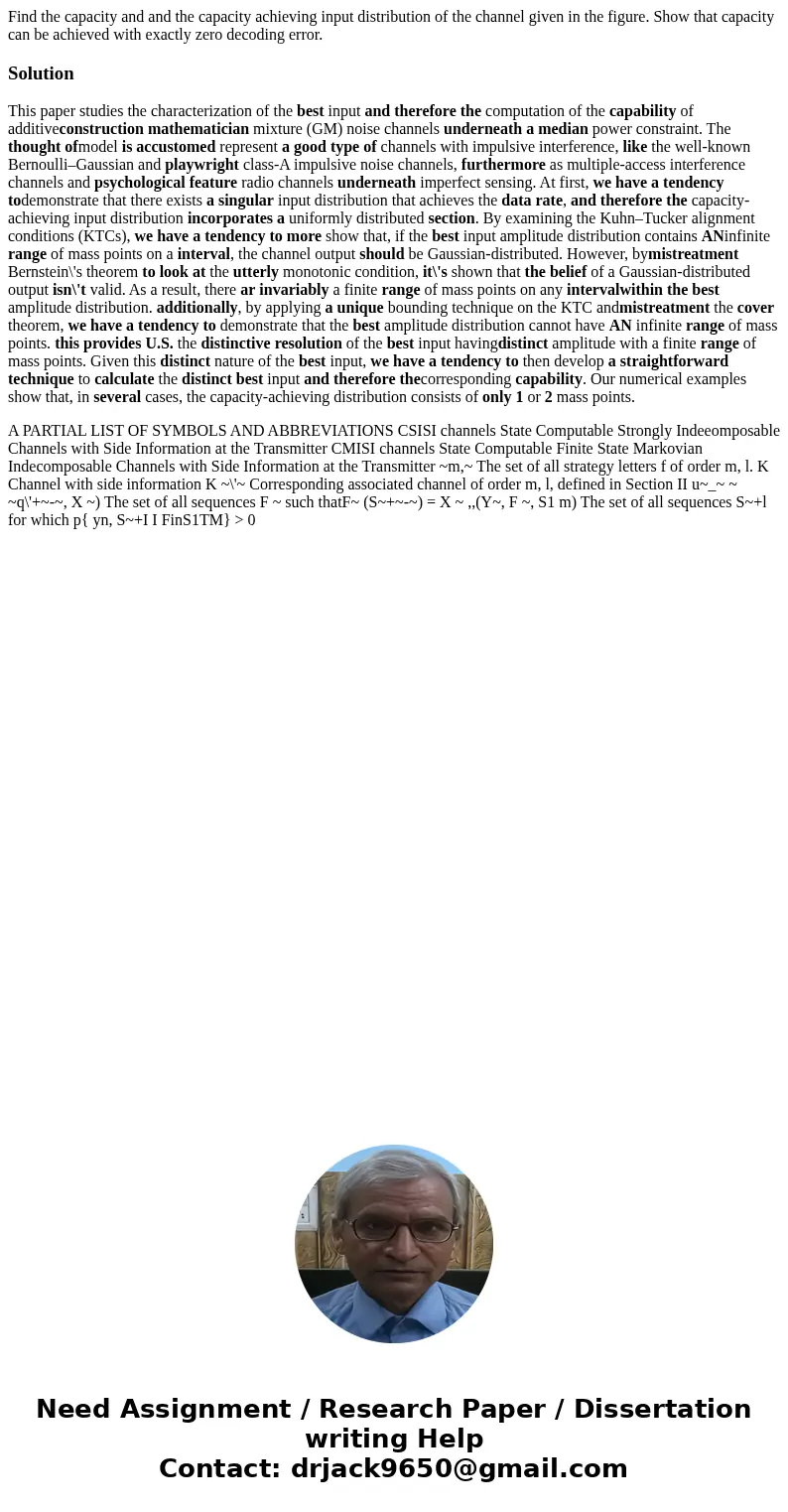Find the capacity and and the capacity achieving input distr
Solution
This paper studies the characterization of the best input and therefore the computation of the capability of additiveconstruction mathematician mixture (GM) noise channels underneath a median power constraint. The thought ofmodel is accustomed represent a good type of channels with impulsive interference, like the well-known Bernoulli–Gaussian and playwright class-A impulsive noise channels, furthermore as multiple-access interference channels and psychological feature radio channels underneath imperfect sensing. At first, we have a tendency todemonstrate that there exists a singular input distribution that achieves the data rate, and therefore the capacity-achieving input distribution incorporates a uniformly distributed section. By examining the Kuhn–Tucker alignment conditions (KTCs), we have a tendency to more show that, if the best input amplitude distribution contains ANinfinite range of mass points on a interval, the channel output should be Gaussian-distributed. However, bymistreatment Bernstein\'s theorem to look at the utterly monotonic condition, it\'s shown that the belief of a Gaussian-distributed output isn\'t valid. As a result, there ar invariably a finite range of mass points on any intervalwithin the best amplitude distribution. additionally, by applying a unique bounding technique on the KTC andmistreatment the cover theorem, we have a tendency to demonstrate that the best amplitude distribution cannot have AN infinite range of mass points. this provides U.S. the distinctive resolution of the best input havingdistinct amplitude with a finite range of mass points. Given this distinct nature of the best input, we have a tendency to then develop a straightforward technique to calculate the distinct best input and therefore thecorresponding capability. Our numerical examples show that, in several cases, the capacity-achieving distribution consists of only 1 or 2 mass points.
A PARTIAL LIST OF SYMBOLS AND ABBREVIATIONS CSISI channels State Computable Strongly Indeeomposable Channels with Side Information at the Transmitter CMISI channels State Computable Finite State Markovian Indecomposable Channels with Side Information at the Transmitter ~m,~ The set of all strategy letters f of order m, l. K Channel with side information K ~\'~ Corresponding associated channel of order m, l, defined in Section II u~_~ ~ ~q\'+~-~, X ~) The set of all sequences F ~ such thatF~ (S~+~-~) = X ~ ,,(Y~, F ~, S1 m) The set of all sequences S~+l for which p{ yn, S~+I I FinS1TM} > 0

 Homework Sourse
Homework Sourse